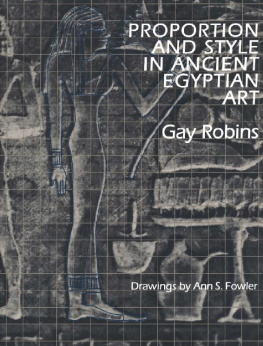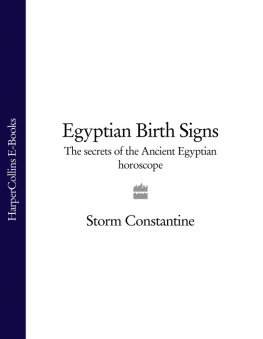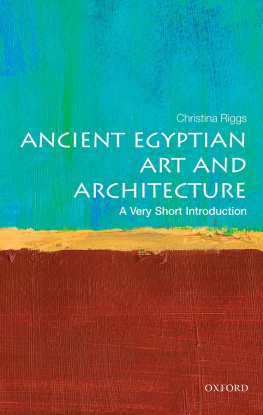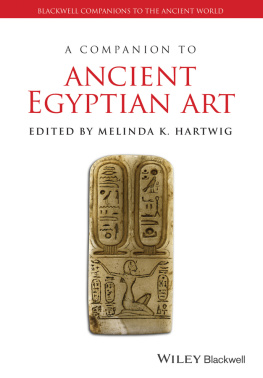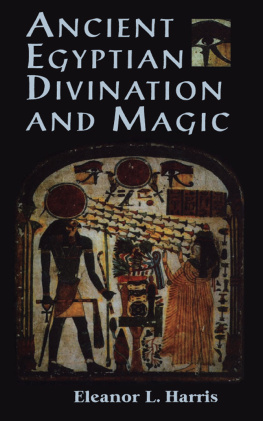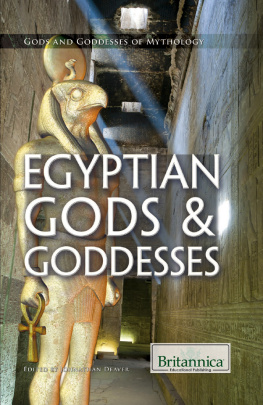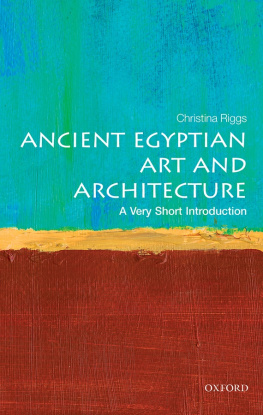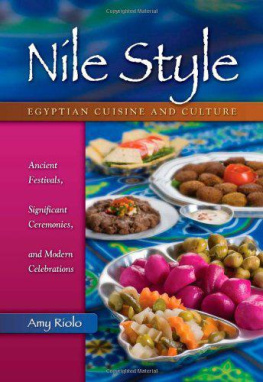PROPORTION AND STYLE IN ANCIENT EGYPTIAN ART
BY GAY ROBINS
Drawings by Ann S. Fowler
University of Texas Press
AUSTIN
Credits
This book has been supported by a grant from the National Endowment for the Humanities, an independent federal agency.
Copyright 1994 by the University of Texas Press
Drawings copyright 1994 by Ann S. Fowler
All rights reserved
First Edition, 1994
Requests for permission to reproduce material from this work should be sent to Permissions, University of Texas Press, Box 7819, Austin, TX 78713-7819.
Library of Congress Cataloging-in-Publication Data
Robins, Gay.
Proportion and style in ancient Egyptian art / by Gay Robins ; drawings by Ann S. Fowler. 1st ed.
p. cm.
Includes bibliographical references and index.
ISBN: 978-0-292-77064-5
1. Art, Egyptian. 2. Art, AncientEgypt. 3. Proportion (Art) 4. Composition (Art) I. Fowler, Ann S. II. Title.
N5350.R65 1994
709'.32dc20
93-65
ISBN 978-0-292-75544-4 (library e-book)
ISBN 978-0-292-78774-2 (individual e-book)
doi 10.7560/770607
Contents
Contents
Preface
Preface
It has long been known that much Egyptian art executed in two dimensions as painting or relief was conceived and carried out on a squared grid, which helped to determine the proportions of the human figure. Although there have been several previous studies of the Egyptian grid, these have been almost entirely limited to single standing or seated male figures, and in some cases have been bedeviled by preconceived theories that relate more strongly to the mind of the modern interpreter than to the intentions of the ancient draughtsmen.
In this book I have attempted to base my own ideas, and any theories that may be put forward, primarily on observations carried out on the actual monuments. I have considered female figures as well as male, other postures besides standing and sitting, and also the interrelationships of multiple figures, animal-headed as well as human, often in different postures and at different levels in a single scene. I show that the squared grid had an important influence on the composition of scenes as a whole and in helping to determine the characteristic style of a particular period. I consider the effects of the major change in the grid that occurred in the twenty-fifth dynasty and persisted thereafter, and elaborate my discovery of the grid system adopted during the Amarna period.
Although I have taken representative material from all stages in the development of Egyptian art, my treatment of the subject is not intended to be exhaustive. The plates and figures provide a corpus of material specifically designed to illustrate points relating to the use of the grid, and irrelevant details have been omitted from the drawings. Not every surviving grid, whether previously recorded or not, has been mentioned, and obviously there are thousands of scenes not illustrated here where further study involving the application of hypothetical grids might prove illuminating. I hope, therefore, that my work may stimulate other scholars to look at the art of different periods of Egyptian history from the points of view set out in this book.
Acknowledgments
Acknowledgments
This project began during my four-year tenure of the Lady Wallis Budge Research Fellowship in Egyptology at Christs College, Cambridge, and I would like to thank the Master and Fellows for support and encouragement. I wish to thank the Egyptian Antiquities Organisation for permission to work and photograph in tombs at Thebes, Amarna, Meir, and Beni Hasan in 1984 and 1986. I am grateful for two grants that I received from the Wainwright Near Eastern Archaeological Fund toward the cost of my fieldwork in Egypt in 1984 and to help with expenses incurred in the preparation of this book. My fieldwork in Egypt during 1986 was funded by a Suzette Taylor Travelling Fellowship from Lady Margaret Hall, Oxford, and by grants from the University of Cambridge through the H.M. Chadwick Fund and the Thomas Mulvey Fund. I would like to thank Mr. Barry Kemp and the Egypt Exploration Society for allowing me to stay at the EES dig house at Amarna in 1984, and Dr. Lanny Bell and the Oriental Institute of Chicago for their hospitality at Chicago House, Luxor, while I was working at Thebes in 1984 and 1986.
I am also grateful to the Trustees of the British Museum and Mr. Vivian Davies, to the Committee of the Egypt Exploration Society and Dr. Patricia Spencer, to the Griffith Institute and Dr. Jaromr Mlek, to the Muse du Louvre and M. de Cnival, to the Metropolitan Museum of Art and Dr. Catharine Roehrig, and to the Pelizaeus Museum Hildesheim and Dr. Bettina Schmitz for supplying me with photographs and permission to publish them. I would also like to thank Ms. Ann Fowler for her patience and skill in drawing the figures for the book.
A large number of other individuals have helped and encouraged me in this project, and to all of them I am grateful. I owe especial thanks to my teacher Prof. John Baines for all his encouragement over the years and also for sending me numerous references relating to this project. I would also like to thank Ms. Janine Bourriau for permission to measure figures on objects in the Fitzwilliam Museum, Cambridge; Mr. Vivian Davies for letting me have copies of photographs of the grids in the tomb of Ahmose son of Abana at el-Kab; Dr. Eiddon Edwards for his interest in my work on Tutankhamun; Mr. Harry James for finding me grids on objects in the British Museum; Mr. Ray Johnson for many fascinating discussions and for showing me his graphic reconstructions of scenes in the temple of Luxor; Dr. Candy Keller for sending me copies of her photographs taken in KV 22; Dr. Rolf Krauss for drawing my attention to the gridded cube in the gyptisches Museum, Berlin acc.no.3/70 and Dr. Settgast for permission to publish it; Mr. Christian Loeben for many discussions and for sharing with me his examples of Amarna grid traces; Dr. Jim Romano for tirelessly answering my questions about Brooklyn Museum 05.390 as well as for much other help; Prof. Harry Smith for his unceasing interest and encouragement; Dr. Donald Spanel for helping me in numerous ways; Dr. Patricia Spencer for help in looking through the EES photo archives of Meir and for providing me with copies of photos; Dr. Nigel Strudwick for lending me his mirror and diffuser, indispensable for my work at Thebes in 1986; Ms. Gabriele Wenzel for letting me see a copy of her masters thesis; and Dr. Helen Whitehouse for permission to measure the figures on the shrine of Taharqa in the Ashmolean Museum, Oxford, and for her help in doing so. In addition, I would like to thank everyone at the University of Texas Press who was involved in preparing Proportion and Style in Ancient Egyptian Art for publication. In particular, I am grateful to Frankie Westbrook, Theresa May, Carolyn Wylie, and Letitia Blalock for their indispensable help at different stages of the process.
Finally, I have to mention the part played by my husband, Prof. Charles Shute, whose inquiries about Egyptian metrology in the early years of our marriage led me to reread Iversens Canon and Proportion in Egyptian Art , and so set this whole work in motion. I would like to dedicate this book to him.
1. Introduction
1
Introduction
This book is a study of a fundamental aspect of ancient Egyptian art, namely, the use of squared grids made by the artists in drawing preliminary sketches of scenes and figures. I have undertaken it because although some features of the grid are already known, particularly in relation to individual seated and standing figures, others have been subject to misunderstanding, the treatment of kneeling figures has been neglected, and there has been virtually no consideration of how the grid relates to the composition of whole scenes or to different styles adopted at different periods.

